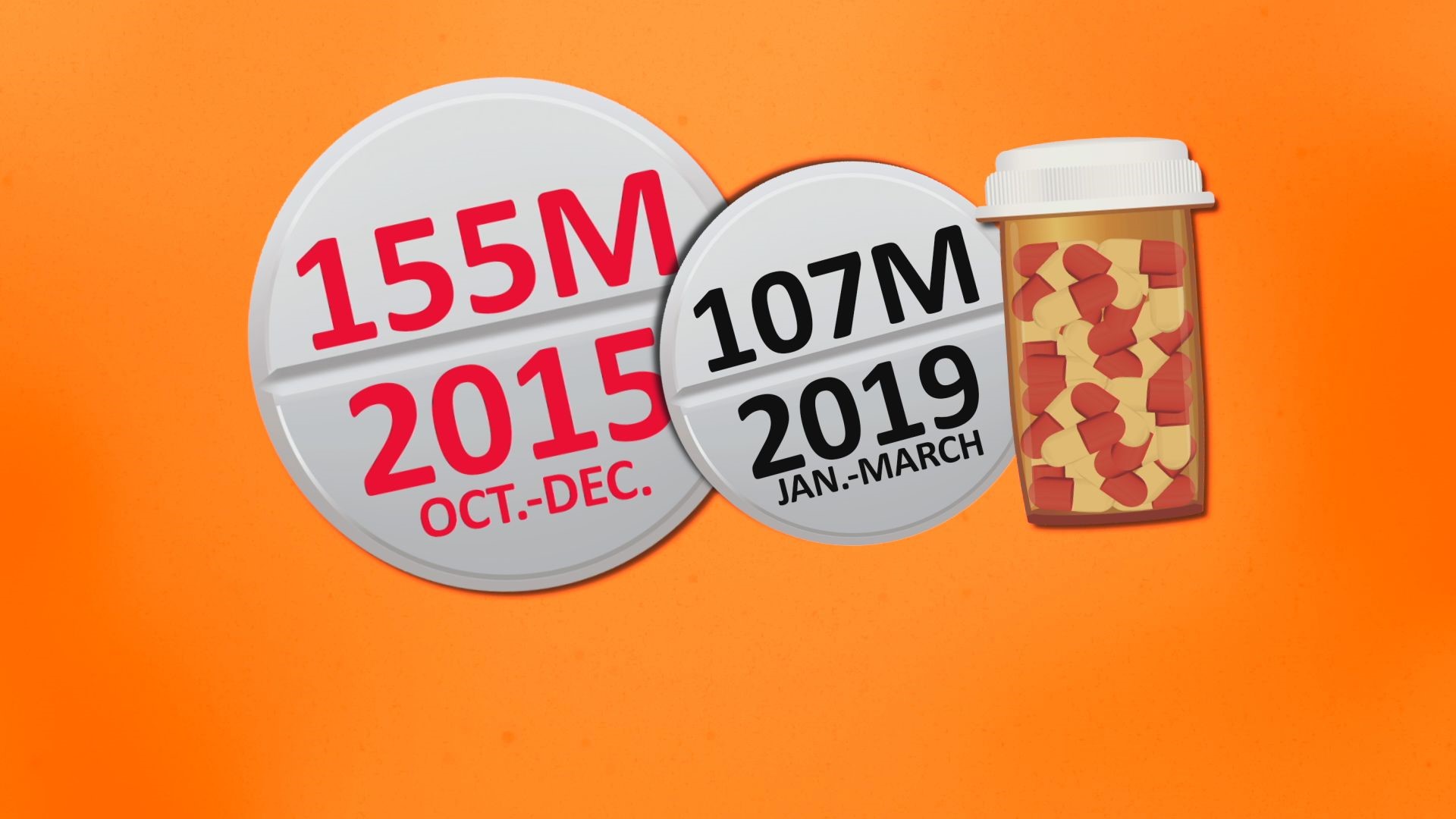GREENSBORO, N.C. — Every time a pharmacist fills an opioid prescription, it's entered in a statewide computer program. And new data from that program shows a dramatic drop in the number of opioid pills dispensed statewide.
It's down about a third. From the height of 155 million pills given out over three months in 2015 to 107 million in the first three months of 2019.
"There are a lot of different things causing prescribes to become far more cautious," said Jean Fisher Brinkley, NC Medical Board Communications Director.
The North Carolina Medical Board points first to the STOP Act which passed in 2017. It set limits on when opioIds can be prescribed and how many can be given out.
The board also created a new program where they used mathematical formulas to flag doctors that prescribe a lot of pain meds. Then they can investigate.
"This program is special because it is a proactive program. We are not waiting for someone to send us information that they think somebody has done something wrong," Brinkley said.
Out of 40,000 practitioners in the system, they've investigated 120 and take public or private action on 40 of them.
"It allows the board the opportunity to intervene and protect the public," Brinkley said.
The data also points to some counties which have a higher prescription rate than others in our area.


For every man, woman and child this is how many pills are given out each year:
76 pain pills in Rockingham County
68 In Wilkes County.
67 in Surry.
Compared to 35 in Guilford and 33 in Forsyth, the lowest in our area.
Not everyone is happy about the decrease of pain pill prescriptions. Many patients have called the medical board complaining they can't get help for their pain. The Board says they'll continue to provide education for doctors about when it is and is not appropriate to prescribe opiods.

